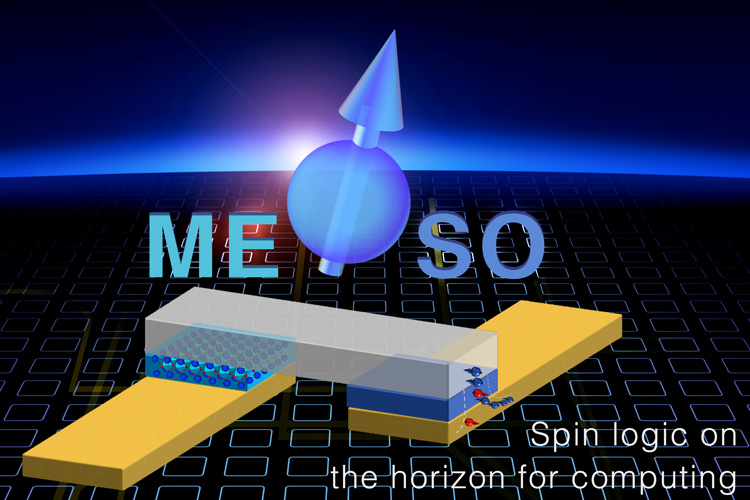Berkeley News December 3, 2018
A team of researchers in the US (UC Berkeley, industry) propose a way to turn multiferroics and topological materials, into logic and memory devices that will be 10 to 100 times more energy-efficient than foreseeable improvements to current microprocessors. MESO is based on a multiferroic material consisting of bismuth, iron and oxygen (BiFeO3) that is both magnetic and ferroelectric. They report that they have reduced the voltage needed for multiferroic magneto-electric switching from 3 volts to 500 millivolts and predict that it should be possible to reduce this to 100 millivolts: one-fifth to one-tenth that required by CMOS transistors in use today. Total energy to switch a bit from 1 to 0 would be one-tenth to one-thirtieth of the energy required by CMOS…read more.

MESO devices, based on magnetoelectric and spin-orbit materials, could someday replace the ubiquitous semiconductor transistor, today represented by CMOS. MESO uses up-and-down magnetic spins in a multiferroic material to store binary information and conduct logic operations. (Intel graphic)